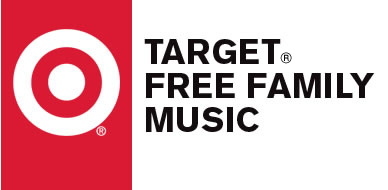Family Concert: For the Love of Nature


 Watch Video
Watch Video
The Sixth Symphony comes from the heart of Ludwig van Beethoven’s “middle” period, a phase when his encroaching deafness changed his relationship to composing and performing, and when the crystalline classicism of his early works gave way to a more focused and concentrated manner of writing. Rather than issuing flowing melodies, Beethoven’s quintessential works from this period build highly integrated forms out of compact, elemental materials.
The most iconic symphony from the “middle” period is Beethoven’s Fifth, but the same single-minded focus shows up in another work that was on his writing desk at the same time in 1808, the Sixth Symphony. The ingredient that made this work unlike any previous symphonies of Beethoven (or anyone else) was the extent to which storytelling was embedded within the formal structure. For the initial performance in 1808, Beethoven acknowledged the external inspiration in his full title: “Pastoral Symphony, or Recollections of Country Life: More an Expression of Feeling than Painting.”
Beethoven’s journals and letters reveal his love of nature, as when he wrote in 1810, “How delighted I will be to ramble for a while through the bushes, woods, under trees, through grass, and around rocks. No one can love the country as much as I do. For surely woods, trees, and rocks produce the echo that man desires to hear.” Recognizing and appreciating the natural world was a cornerstone of the Romantic ethos, and Beethoven’s Pastoral Symphony joined a common thread in music, art and literature of the early nineteenth century that rhapsodized on the beauty and grandeur of the natural world, with a reverence that was in no small part spiritual.
Just as the first four notes of the Fifth Symphony influence every measure of the opening movement, the Sixth Symphony builds an expansive essay out of a seemingly naïve theme. The first movement, characterized as the “Awakening of cheerful feelings upon arrival in the country,” enters bashfully, with four quiet measures that trail off. Fragments of this figure build slowly, basking in long stretches of unmoving harmony. The development section, often an opportunity for increased turbulence and activity, instead sinks deeper into a country calm, savoring each radiant chord change.
The second movement, “Scene at the Brook,” establishes a lapping triplet pulse under another mere wisp of melody. The idyllic scene ends with a trio of birdcalls from the woodwinds, representing a nightingale, quail and cuckoo. From here, the symphony diverges from a typical four-movement pattern. There is a Scherzo-like third movement, “Happy gathering of country folk,” but the rollicking dance music halts unresolved and is supplanted by the first staccato raindrops of the “Thunderstorm.” Fearful dissonances and thunderous timpani strikes make for a convincing tempest, until it trails off in one last upward patter from the flute. A clarinet takes over to establish the sing-song contours of the “Shepherds’ song; cheerful and thankful feelings after the storm.” This tune, at once humble and heroic, returns the symphony to its pastoral calm. Near the end, a hymn-like variant lends a deeper resonance to this sunny conclusion.
Aaron Grad ©2023
Los Angeles-based puppeteer Victor Yerrid brings the stage and the music to life with his artistry. Yerrid is a renowned puppeteer and actor who's work in children's television includes Sesame Street, Sid The Science Kid, Hannah Montana, Pajanimals, Bear In The Big Blue House, and Between The Lions.
Jess McKay's puppetry credits include work with Henson Alternative's Puppet Up!, Fairy Tale Theatre: 18 & over, Swazzle, Draft Kings, Maker Studios, Insomniac, Variety Verité (Groundlings), EPIX, Truth Campaign, The O'Neill Puppetry Conference, Puppetolio, Flock Theatre & more. Jess is a company member of Improvatorium, a Groundlings grad, and has a BFA in acting from The Hartt School. He has great parents, a pretty sweet brother & brilliant friends.
Please note: Due to high demand, tickets to the 11:00am performance are no longer available at this time. Please reserve tickets for the 9:00am performance.
The Saint Paul Chamber Orchestra’s popular Start the Music!, xplorchestra! and Family Concerts are FREE, thanks to generous support from Target.

Get driving directions and find nearby parking.
Find dining options close to the venue.
View seating charts to find out where you'll be seating.
SPCO concerts are made possible by audience contributions.
For exclusive discounts, behind-the-scenes info, and more:
Sign up for our email club!
